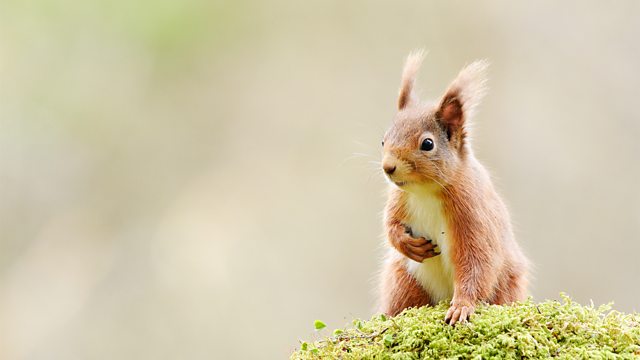Episode 2
The Lowlands are an intensely managed place dominated by cities, woods and farmland. Nature has often been pushed to the fringes., but in some places, signs of change are emerging.
More than 80 per cent of Scotland’s population live in the Lowlands, a vast swathe of the country stretching from Aberdeenshire in the north east to the border with England in the south. This is a landscape characterised by sprawling urban centres, huge areas of agricultural farmland, fragmented forests and mighty rivers. The Lowlands are the most intensely managed part of Scotland’s landscape. But wildlife still survives here, clinging on, and in some places a few species are beginning to stage a comeback.
In the heart of Edinburgh, the peregrine falcon now graces the sky on a daily basis. A pair have recently started raising a family here, just a few decades on from the cusp of extinction in Scotland and the UK.
Further out in the suburbs, we see other animals have also adapted to the urban environment. By the Water of Leith, a family of foxes have made a home, and we watch their tiny cubs starting to explore the world outside their den, learning the skills needed for independence.
Across the central belt in Glasgow lives a hardy collection of water voles - nowhere near water! They are the only population known to live in burrows in open grassland anywhere in the UK, and were only discovered here in 2008.
Further north lies the River Tay, journeying for over 100 miles from source to sea. As it passes the mighty Tay Reedbed, the river slows and widens dramatically. The reedbed stretches for miles along the north shore and is home to Scotland’s largest population of rare bearded tits, which only colonised here in the early 1990s.
Further upstream in Perth, Scotland’s first urban population of beavers can now be found. These industrious rodents have recently returned from extinction, after an absence of over 400 years. More than 1,000 of them can now be found throughout the Tay catchment, sometimes coming into conflict with farmers.
The Tay nears the end of its journey in Dundee, and out on the mudflats we witness huge numbers of wading birds gathering to forage. They race against the incoming tide in search of food, before setting off to look for somewhere quiet to rest and wait out high water.
Further inland lies one of Scotland’s great agriculture heartlands. Here, two special families of marsh harriers are nesting, both with a shared secret, and filmed for the very first time in Scotland.
Last on
More episodes
Previous
Next
Credits
| Role | Contributor |
|---|---|
| Narrator | Thoren Ferguson |
| Executive Producer | Nigel Pope |
| Executive Producer | Jackie Savery |
| Director | Fergus Gill |
| Series Producer | Jon Morrice |
Broadcasts
- Sun 24 Sep 2023 21:00
- Fri 1 Dec 2023 20:00
- Mon 20 May 2024 20:00

